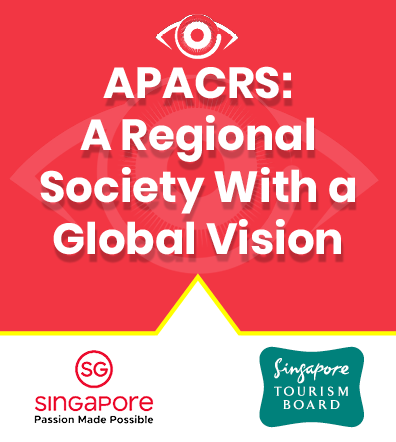Eyeworld Weekly Update |
Volume 20, Number 12 |
20 March 2015 |
- EVA system granted U.S. approval
- Suprachoroidal injection of TA shows promise in early studies
- ShK-186 preclinical results considered 'encouraging'
- GRF grants $1.6M in research funding
- Charles Johnson, MD, named Neurotech's chief medical officer
EVA system granted U.S. approval
The EVA retina and cataract surgical system has received U.S. regulatory approval, marketer DORC (Zuidland, the Netherlands) said in a news release. EVA has been on the European market since 2013, and was approved in Japan last month.
According to the company, EVA uses a proprietary fluid control system that "eliminates the risk of unwanted pulsation and delivers the precise flow or fast vacuum" as required by a surgeon. The newly approved combination system is also designed for vitrectomy and includes a 532 nm laser for retinal surgeries.Suprachoroidal injection of TA shows promise in early studies
Eight patients with non-infectious uveitis at 3 U.S. centers received a single suprachoroidal injection of a commercially available formulation of triamcinolone acetonide (TA) using Clearside's proprietary microinjector, the Alpharetta, Ga.-based company said in a news release. During the course of the phase 1 and 2 trial, patients showed improvement in BCVA ranging between 1 and 5 lines. When measured at week 12, the average improvement in BCVA exceeded 2 lines of improvement, while at week 26 the average was close to 3 lines of improvement. At weeks 12 and 26, the average reduction in retinal thickness was more than 100 µm. No patient in the trial experienced any meaningful increase in intraocular pressure (IOP) at any time point following the suprachoroidal injection of TA; therefore, no patients were required to use IOP-lowering medications in the trial.
ShK-186 preclinical results considered 'encouraging'
ShK-186, in early preclinical studies as a topical treatment of ocular autoimmune disorders, has shown promise in animal studies, developer Kineta (San Diego) said in a press release. Results presented at the Ocular Diseases Drug Discovery Conference showed topical administration of ShK-186 reduced disease severity and the infiltration of damaging inflammatory cells in an animal model of anterior uveitis. Previous research has also shown that systemic administration of ShK-186 is effective in preventing and treating disease in models of psoriasis, multiple sclerosis, rheumatoid arthritis, and autoimmune kidney diseases, among others.
The company said the anterior uveitis model showed ShK-186 is able to prevent disease and inflammatory cell infiltration including T cells expressing the Kv1.3 channel, and may have potential in Sjogren's syndrome and dry eye.GRF grants $1.6M in research funding
The Glaucoma Research Foundation (San Francisco) has granted $1.6 million to 8 researchers with 1-year Shaffer Grants and 4 principal investigators engaged in the multi-year research collaboration Catalyst for a Cure, the association said.
The multi-year Catalyst for a Cure consortium is a collaborative research initiative comprised of 4 scientists; each will receive $250,000 to identify specific glaucoma biomarkers. The 8 researchers will be granted $40,000 each to further their own glaucoma research: Donald L. Budenz, MD (Incidence of Glaucoma and Glaucoma Progression in an Urban West African Population); Paul L. Kaufman, MD (Gene Therapy for Glaucoma); Richard T. Libby, PhD (Understanding Axonal Degeneration Pathways in Glaucoma); Paloma Liton, PhD (Lysosomal Enzymes, Glycosaminoglycans and Outflow Pathway Physiology); Lyne Racette, PhD (Early Detection of Glaucoma Progression using Structural and Functional Data Jointly); Matthew A. Smith, PhD (Measuring the In-vivo Effects on the Optic Nerve Head of Acute Variations in Cerebrospinal Fluid Pressure); Shandiz Tehrani, MD (Local Drug Delivery to the Optic Nerve Head as a Novel Treatment in Experimental Glaucoma); and Gülgün Tezel, MD (Molecular Biomarkers of Glaucoma).Charles Johnson, MD, named Neurotech's chief medical officer
Charles A. Johnson, MD, has been named chief medical officer at Neurotech (Cumberland, R.I.), the company said. Dr. Johnson has previously worked at Inspire Pharmaceuticals and Genentech, among other companies. Prior to joining the pharmaceutical industry, Dr. Johnson spent 18 years practicing medicine and holds degrees from University of Cape Town (South Africa) and Washington University (St. Louis).
RESEARCH BRIEFS
- A preliminary study on a Tie2 activator administered subcutaneously for 28 days as monotherapy in patients with diabetic macular edema (DME) was well-tolerated and produced clinically meaningful reductions in retinal thickness, correlating with improved visual acuity, according to study authors. Peter Campochiaro, MD, and colleagues evaluated AKB-9778, a first-in-class inhibitor of human protein tyrosine phosphatase beta (HPTPβ) that activates the Tie2 pathway to promote vascular stability, preventing abnormal blood vessel growth and vascular leakage, in 4 dose cohorts. Six patients in each cohort self-administered subcutaneous injections of 5 mg, 15 mg, 22.5 mg, or 30 mg AKB-9778 twice daily for 4 weeks. All doses were well tolerated. At 1 month, 7 out of 18 patients receiving doses of 15 mg or higher demonstrated a reduction in central subfield thickness (CST) in the study eye of greater than 50 µm, and 13 out of 18 patients gained 5 or more letters of visual acuity in the study eye as measured by the best corrected visual acuity (BCVA) assessment. Among 18 patients receiving 15 mg or more twice daily, CST decreased by more than 100 μm in 5 patients and by 50 to 100 μm in 2 patients. There was a significant correlation between reduction in CST and improvement in BCVA. The study is published in Ophthalmology.
- The Global Delphi Panel of Keratoconus and Ectatic Diseases has published its recommendations on keratoconus and ectatic diseases in Cornea. The panel stated that despite extensive knowledge regarding the diagnosis and management of keratoconus and ectatic corneal diseases, many controversies still exist, and that led to the development of these guidelines. Numerous agreements (defined as a 2/3 majority among subpanel members) were generated in definitions, methods of diagnosing, and management of keratoconus and other ectatic diseases. Nonsurgical and surgical treatments for these conditions, including the use of corneal crosslinking and corneal transplantations, were presented in a stepwise approach. A flowchart describing a logical management sequence for keratoconus was created.
- Femtosecond pretreatment caused a greater transient rise in intraocular pressure (IOP) after treatment and a higher residual IOP after vacuum undocking in glaucomatous eyes than in non-glaucomatous eyes, according to Erica Darian-Smith and colleagues. In their nonrandomized, interventional, prospective case series, they compared results from 143 eyes (97 patients). Pretreatment was performed using a fluid-filled optical docking system (Liquid Optics Interface). With the patient supine, the IOP was measured at 4 time points using a rebound tonometer (Icare Pro). Forty-three eyes (30.1%) had documented glaucoma. The mean baseline IOP was 20.2 mm Hg±4.2 in glaucomatous eyes and 18.9±4.0 mm Hg in non-glaucomatous eyes (P=.06). The mean change in IOP values between each timeframe and baseline was as follows: vacuum-on, 13.8±9.9 mm Hg and 11.1±6.9 mm Hg, respectively (P=.06); after treatment, 17.4±7.4 mm Hg and 14.1±7.2 mm Hg, respectively (P=.014); after undocking of vacuum, 9.9±5.4 mm Hg and 8.7±5.7 mm Hg, respectively (P=.24). The study authors cautioned that longer term implications remain unknown. The study is published in the Journal of Cataract & Refractive Surgery.
Important Safety Information about PROLENSA®
- PROLENSA® contains sodium sulfite, a sulfite that may cause allergic type reactions including anaphylactic symptoms and life-threatening or less severe asthmatic episodes in certain susceptible people. The overall prevalence of sulfite sensitivity in the general population is unknown and probably low. Sulfite sensitivity is seen more frequently in asthmatic than in nonasthmatic people.
- All topical nonsteroidal anti-inflammatory drugs (NSAIDs), including bromfenac, may slow or delay healing. Concomitant use of topical NSAIDs and topical steroids may increase the potential for healing problems.
- There is the potential for cross-sensitivity to acetylsalicylic acid, phenylacetic acid derivatives, and other NSAIDs, including bromfenac. Use with caution in patients who have previously exhibited sensitivities to these drugs.
- There have been reports that ocularly applied NSAIDs may cause increased bleeding of ocular tissues (including hyphemas) in conjunction with ocular surgery. Use with caution in patients with known bleeding tendencies or who are receiving other medications which may prolong bleeding time.
- Use of topical NSAIDs may result in keratitis. Patients with evidence of corneal epithelial breakdown should immediately discontinue use of topical NSAIDs, including bromfenac, and should be closely monitored for corneal health. Patients with complicated ocular surgeries, corneal denervation, corneal epithelial defects, diabetes mellitus, ocular surface diseases (e.g., dry eye syndrome), rheumatoid arthritis, or repeat ocular surgeries within a short period of time may be at increased risk for corneal adverse events which may become sight threatening. Topical NSAIDs should be used with caution in these patients. Post-marketing experience with topical NSAIDs suggests that use more than 24 hours prior to surgery or use beyond 14 days post-surgery may increase patient risk for the occurrence and severity of corneal adverse events.
- PROLENSA® should not be instilled while wearing contact lenses. The preservative in PROLENSA®, benzalkonium chloride, may be absorbed by soft contact lenses. Lenses may be reinserted after 10 minutes following administration of PROLENSA®.
- The most commonly reported adverse reactions in 3%-8% of patients were anterior chamber inflammation, foreign body sensation, eye pain, photophobia, and blurred vision.
 Licensed Publications |
Licensed through ASCRS American Society of Cataract and Refractive Surgery, 4000 Legato Road, Suite 700, Fairfax, VA 22033-4003, USA.
All rights reserved. The ideas and opinions expressed in EyeWorld Asia-Pacific Weekly News do not necessarily reflect those of the ASCRS�ASOA or APACRS. Mention of products or services does not constitute an endorsement by the ASCRS�ASOA or APACRS. Copyright 2008, EyeWorld News Service, a division of ASCRS Media. |



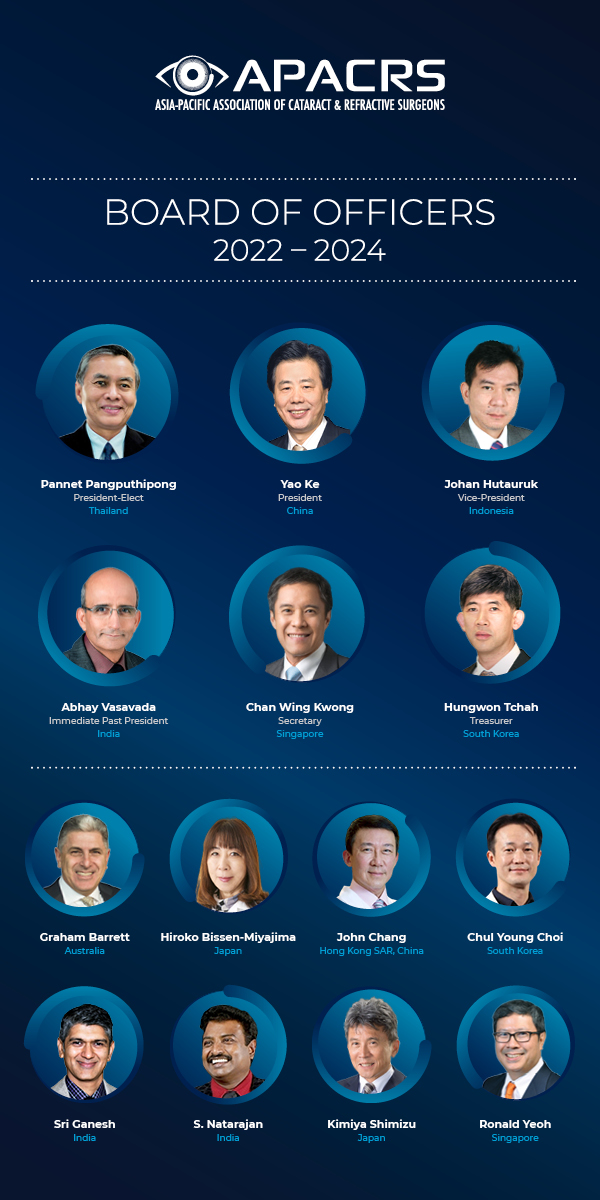
 EyeSustain Update
EyeSustain Update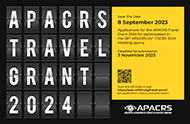 2024 APACRS TRAVEL GRANT
2024 APACRS TRAVEL GRANT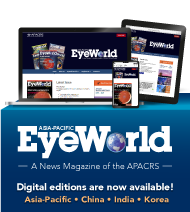 Digital EyeWorld
Digital EyeWorld VOL. 39 (2023), ISSUE 3
VOL. 39 (2023), ISSUE 3  Membership Information
Membership Information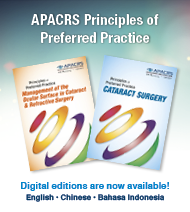 APACRS Principles of Preferred Practice
APACRS Principles of Preferred Practice